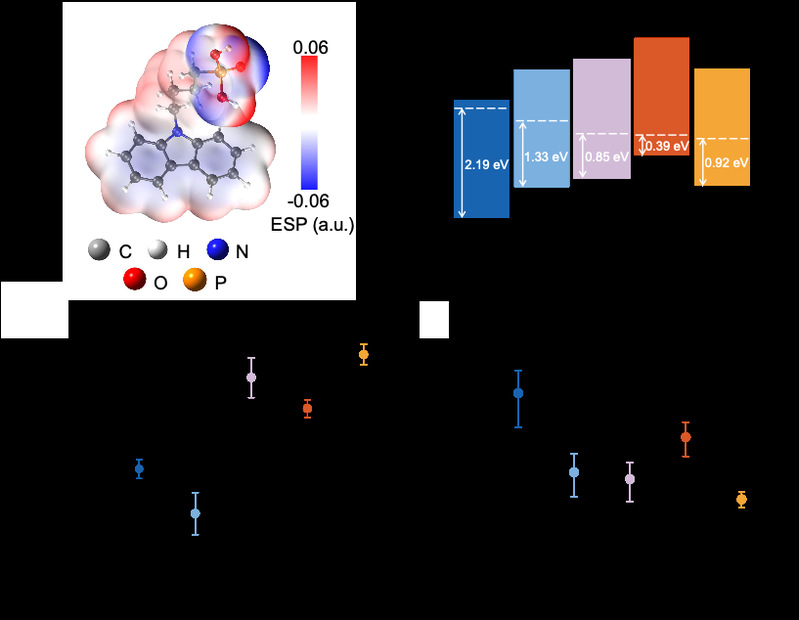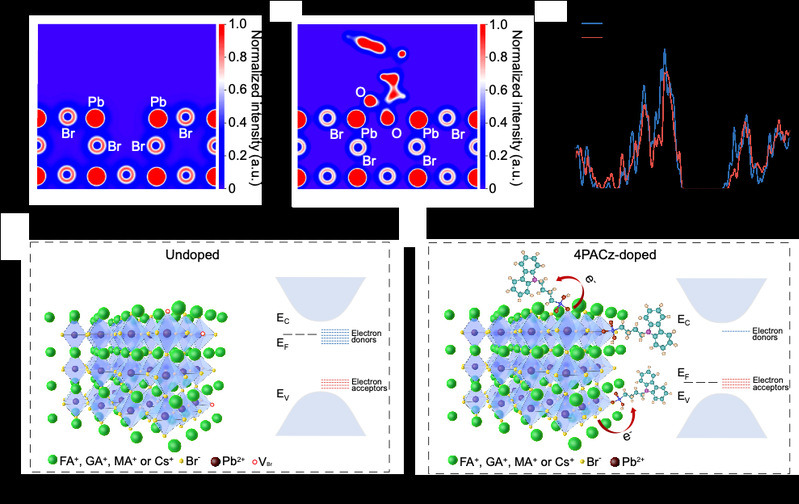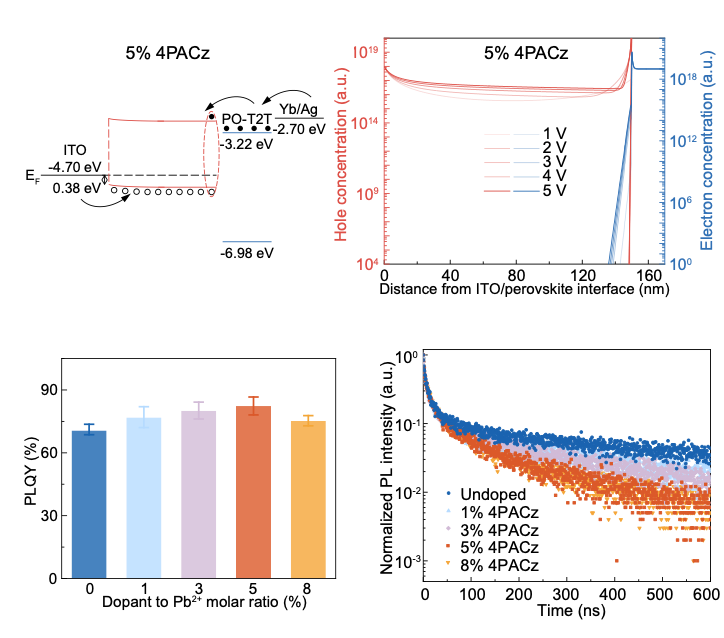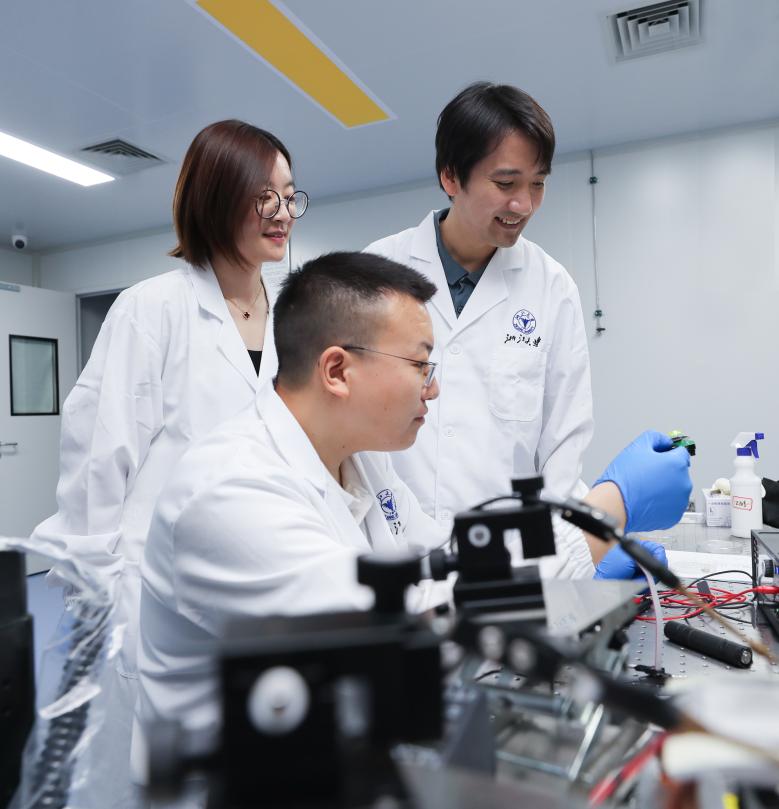Controllable doping in a perovskite semiconductor enables ultra-bright LEDs
Semiconductors are at the heart of the modern electronic industry. The ability of controlling the polarity and concentration of electric charges in semiconductors have led to revolutionary inventions including diodes, transistors, solar cells, detectors, LEDs and semiconductor lasers. For typical semiconductors, the control of the electrical properties is achieved by “doping”, the inclusion of impurity elements into the crystal lattices. For instance, the introduction of boron into silicon turns it into a positive (p-) type semiconductor mainly conducting positive charges, while the inclusion of phosphorous turns silicon into a negative (n-) type semiconductor mainly conducting negative charges.
Metal halide perovskites are a new class of semiconductor exhibiting great performance in optoelectronic applications such as solar cells, LEDs and lasers, and are easily producible at low cost. Despite the rapid progress in this emerging field, the mechanisms of reliably controlling doping in perovskite semiconductors are yet to be found.
Recently, researchers at Zhejiang University discovered that the polarity and charge concentration of an emissive perovskite semiconductor can be controlled by the incorporation of a molecular dopant. A continuous transformation from n-type to p-type behaviors in the perovskite material was achieved, while retaining very strong emissive properties. The controllable doping leads to the demonstration of high-efficiency (28.4%) perovskite LEDs with a simple device structure, achieving record-breaking brightness (over 1.1 million cd/m2) amongst all classes of solution-processable LEDs (including OLEDs, quantum dot LEDs and perovskite LEDs). The related research paper entitled “Controllable p- and n-type behaviours in emissive perovskite semiconductors” was recently published in Nature (Xiong et al, Nature (2024), https://doi.org/10.1038/s41586-024-07792-4). The corresponding authors of the paper are Prof. DI Dawei and Prof. ZHAO Baodan of Zhejiang University. XIONG Wentao is the first author of the paper.

Figure 1: p-type to n-type transition in a perovskite semiconductor. Source: Nature (2024).
“Perovskites are a class of semiconductor, so they are expected to show semiconductor properties”, said Prof. DI Dawei, Deputy Director of the International Research Center for Advanced Photonics of Zhejiang University. “A range of experiments conducted by us show that the Fermi level, the expected energy of the electrons, moves gradually from the higher-energy side to the lower-energy side across the bandgap of the perovskite semiconductor. This means that the semiconductor transforms from n-type which is in favor of conducting electrons (negative charges), to p-type which is in favor of conducting holes (positive charges). The charge carrier polarity and concentrations can be adjusted by the doping process, as the Hall effect measurements tell us”, said Di.

Figure 2: The molecular doping process. Source: Nature (2024).
“The dopant used for controlling the electrical properties was a molecular material called 4PACz, which was used in earlier studies to form an ultrathin molecular layer in efficient perovskite solar cells”, said Prof. ZHAO Baodan of Zhejiang University. “In our study, these molecules were found to work as an effective dopant for the perovskite semiconductors. Quantum chemical calculations reveal that the molecules show strong electron withdrawing abilities, effectively acting as a p-type dopant for the perovskite. Similarly, n-type dopants for perovskites were also found by us.” said Zhao.

Figure 3: Performance of hole-transport layer-free PeLEDs. Source: Nature (2024).
XIONG Wentao, the first author of the paper, is a PhD student supervised by Profs. Di and Zhao. He said: “Using this type of doped perovskite materials, we can build devices with new structures and better performance. For example, with a p-type perovskite, we could fabricate perovskite LEDs without any hole-transport layers.” “The perovskite LEDs we made achieved very high external quantum efficiencies of up to 28.4%. The energy-conversion efficiency of the devices reached 23.1% - the highest for visible perovskite LEDs”, said Xiong. “Surprisingly, these perovskite LEDs were extremely bright. The highest brightness achieved was 1.16 million cd/m2 (1.16 million nits) – this is a new record for the brightness of solution-processable LEDs, including OLEDs, quantum-dot LEDs, and perovskite LEDs”,said Xiong.

Figure 4: Mechanisms of device performance improvements. Source: Nature (2024).
The underlying reasons for the exceptional device performance were investigated by device modelling and optical measurements, which align very well with the device working mechanisms hypothesized by the researchers. The ability of controlling the polarity and concentration of charge carriers in perovskite semiconductors indicates the possibilities in creating new device designs and functionalities. The researchers created initial demonstrations of p-n junction diodes based on perovskite semiconductors. The controllable doping of perovskite semiconductors is expected to lead to a new generation of optoelectronic devices.

Photo: Researcherstesting perovskite devices in the lab. [from right to left] Prof DI Dawei, XIONG Wentao, and Prof. ZHAO Baodan.
Related paper:
Xiong, W. et al, Controllable p- and n-type behaviours in emissive perovskite semiconductors. Nature (2024). https://www.nature.com/articles/s41586-024-07792-4
Sources: Prof. DI Dawei, Prof. ZHAO Baodan, XIONG Wentao and co-authors; Nature (2024).
(From ZJU NEWSROOM)

